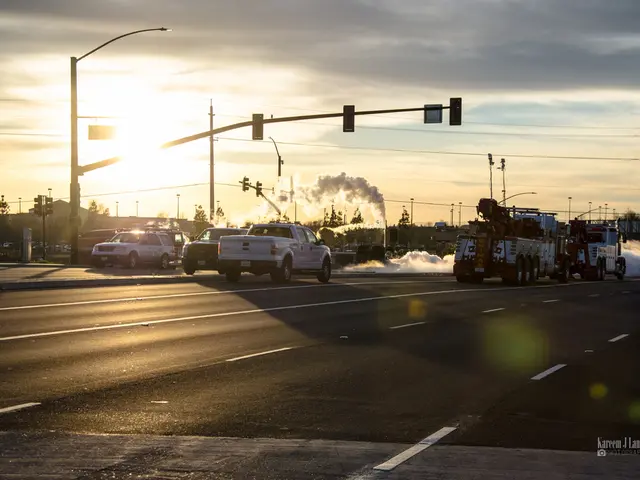Heat Pumps Dominate New German Building Heating: A Rising Trend Amid Production Dips
New construction projects in Germany mostly utilize heat pumps for heating purposes.
In the ever-evolving world of green energy, Germany has made a significant stride with over two-thirds of its residential buildings under construction in 2024 set to be heated by heat pumps. Compared to 2023, this number saw a noticeable surge of around five percentage points, hitting a total of 69.4 percent. Since 2014, the use of heat pumps as primary heating sources in residential buildings has more than doubled, setting a clear trend.
Heat pumps particularly find a comfortable home within single and two-family houses, serving as the go-to heat source in 74.1 percent of newly constructed homes in this category in 2024. In multi-family dwellings, the figure stands at 45.9 percent. Stats show that many of these new residential buildings are primarily relying on renewable energy sources for heating, such as ground and air heat pumps, wood pellet boilers, and solar thermal energy. In fact, this was the primary energy source in 73.9 percent of the residential buildings completed in 2024. A decade ago, that figure was a meager 38.5 percent. If we consider supplementary heat sources like wood-burning stoves, renewable energy powered heating systems were installed in nearly 82.3 percent of new buildings in 2024. Natural gas is the second most commonly used primary heating source, accounting for 15.0 percent of new buildings in 2024, a significant drop from the 50.7 percent share seen in 2014.
When it comes to existing buildings, the picture is quite different: As of May 15, 2022, conventional gas heating dominated in 53.9 percent of existing residential buildings, the statistical office reports, citing census data. Meanwhile, renewable energy makes a modest appearance in heating existing buildings, with a 10.2 percent share. Despite the prevalence of renewable energy sources in newly constructed buildings, their use in existing buildings remains somewhat limited. But it's evident that a shift towards renewable energy sources is underway, as around 84.8 percent of the approximately 54,800 residential buildings approved in 2024 are set to primarily utilize renewable heat sources.
The driving force behind these renewable heat sources? Heat pumps, predominantly. However, the production of heat pumps recently took a nose dive, reporting the lowest levels in the past six years. In 2024, an estimated 162,400 units were produced in Germany, marking a stark 59.4 percent decrease from the previous year.
Now, you might wonder why the drop in production despite growing adoption rates. Several factors are at play:
- Global Market Challenges: High upfront costs, labor shortages, and immature supply chains pose significant hurdles to the global heat pump market, reflecting on Germany's production as well[3].
- Investment and Manufacturing Woes: The EU experienced a general decline in investments in heat pumps and other renewable technologies in 2024, partly due to underused capacity and factory closures[4].
- Regulatory Landscape: Though Germany has boldly banned most new fossil fuel heating systems starting in 2028, policy changes and potential adjustments can impact production stability[5].
- Economic Factors: The high cost of electricity, often taxed more heavily than fossil fuels in Europe, can make heat pumps less appealing in the short term[3].
Despite these hurdles, heat pumps continue to play a critical role in Germany's transition towards cleaner energy sources, and their adoption in new homes is on the rise[1]. To maintain and boost production levels, these challenges must be addressed effectively.
- The increased usage of heat pumps in new residential buildings, while experiencing a dip in production, is influenced by factors such as global market challenges, investment and manufacturing woes, regulatory landscape, and economic factors.
- In the pursuit of environmental-science focused goals in the industry, the emphasis on renewable-energy sources like heat pumps for vocational training programs is essential to combat the current production difficulties and accelerate the adoption of cleaner energy solutions.
- Given the drop in heat pump production and the importance of vocational training for emerging green technologies, amending community policy to support these industries could help mitigate the identified challenges, enabling a sustainable future for renewable-energy and energy finance sectors.







